
Tainted Meat
Horse meat originating from the U.S. is NOT fit for human consumption. Horses within the US are not intentionally raised for food, and therefore are administered a plethora of pharmaceuticals. A vast majority of these drugs are clearly labeled "do not administer to animals intended for human consumption".
CHAPTER III--FOOD SAFETY AND INSPECTION SERVICE (FSIS) - DEPARTMENT OF AGRICULTURE PART 311--DISPOSAL OF DISEASED OR OTHERWISE ADULTERATED CARCASSES AND PARTS--Table of Contents Sec. 311.39 Biological residues. Carcasses, organs, or other parts of carcasses of livestock shall be condemned if it is determined that they are adulterated because of the presence of any biological residues.
So, when we refer to tainted meat, not only are we suggesting diseased animals, we are also suggesting animals pumped up with pharmaceuticals. Have you ever taken the time to read all the warning labels on every single bottle, tube or tub that you buy. Did you ever notice that quite a few are clearly labled - DO NOT ADMINISTER TO HORSES INTENDED FOR HUMAN CONSUMPTION.
Think of all the wormers, sprays, antibiotics, prescriptions, pain relievers, anti-inflammatories, supplements and injections that you administer to your horse regulary and what your vet administers when needed.
Now, when I go to auctions, I don't see either the buyers, the sellers or the auction houses routinely doing blood work on every horse to screen them for disease and chemicals. The auction houses actually have devised a system so that horses can be sold WITHOUT a negative coggins and a health certificate!!!!
I have seen video footage of a working slaughter house. They unload the horses, line them up in a chute along the building, and one by one, the horses are slaughtered and processed. At no point on that tape did someone come out to test those horses for anything. Additionally, some horses who are brought into auctions have injuries, illness or disease, and I am sure a large portion of them have been given something medicinal.
If you recall, last year the North East U.S. had the EIA outbreak, and quite a few afflicted horses were traced back to auction sales. EIA does not always have physically obvious signs in the initial stages. So it is very likely diseased horses were being slaughtered for human consumption last year.
I believe that once the word is out on the "tainted meat" issue, the Europeans and Japanese will urge the EU to stop accepting imports of horse meat. American citizens do not eat horse meat, and if the foreign owned slaughter houses can't export it, then they will have to stop accepting horses. That in turn will cramp alot of horse dealers' business and there will be less and less "killer buyers", because they will have to find a new career. People will then stop bringing horses to the auction that are unfit, because they will find that there is no "meat man" willing to give them a couple of bucks.
There are so many ways to help end horse slaughter, and this is just one more.
PHOTOS OF LABELS OF EQUINE PRODUCTS......
and they all have one thing in common, they are all clearly labeled, sometimes more than once even, clearly indicating DO NOT ADMINISTER TO HORSES INTENDED FOR HUMAN CONSUMPTION!
More from the FSIS at the bottom of the page.
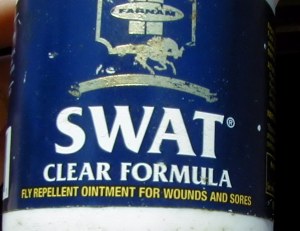
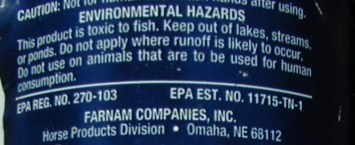



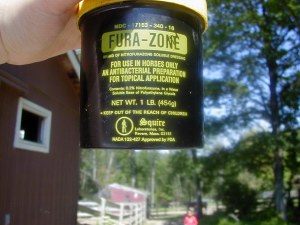

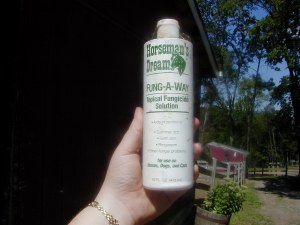
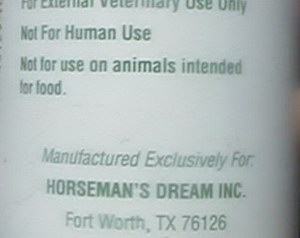
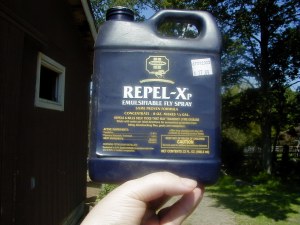
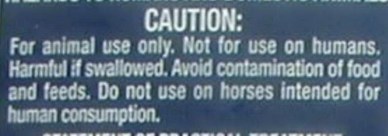


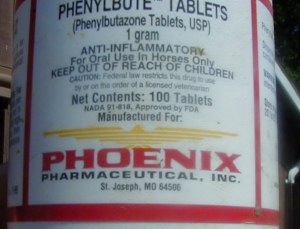


From the FSIS
Sec. 309.16 Livestock suspected of having biological residues.
(a) Except as provided by paragraph (d) of this section, livestock suspected of having been treated with or exposed to any substance that may impart a biological residue which would make the edible tissues unfit for human food or otherwise adulterated shall be handled in compliance with the provisions of this paragraph. They shall be identified at official establishments as ``U.S. Condemned.'' These livestock may be held under the custody of a Program employee, or other official designated by the Administrator, until metabolic processes have reduced the residue sufficiently to make the tissues fit for human food and otherwise not adulterated. When the required time has elapsed, the livestock, if returned for slaughter, must be re-examined on ante-mortem inspection. To aid in determining the amount of residue present in the tissues, officials of the Program may permit the slaughter of any such livestock for the purpose of collecting tissues for analysis for the residue. Such analysis may include the use of inplant screening procedures designed to detect the presence of antimicrobial residues in any species of livestock.
(b) All carcasses and edible organs and other parts thereof, in which are found any biological residues which render such articles adulterated, shall be marked as ``U.S. Condemned'' and disposed of in accordance with Sec. 314.1 or Sec. 314.3 of this chapter.
(c) [Reserved]
(d) Calves shall not be presented for ante-mortem inspection in an official establishment except under the provisions of this paragraph.
(1) Definitions. For purposes of this paragraph, the following definitions shall apply:
(i) Calf. A calf up to 3 weeks of age or up to 150 pounds.
(ii) Certified calf. A calf that the producer and all other subsequent custodians of the calf certify in writing
[[Page 110]] has not been treated with any animal drug while in his or her custody or has been treated with one or more drugs in accordance with FDA approved label directions while in his or her custody and has been withheld from slaughter for the period(s) of time specified by those label directions.
(iii) Healthy calf. A calf that an inspector determines shows no visual signs of disease or treatment of disease at ante-mortem inspection.
(iv) Producer. The owner of the calf at the time of its birth.
(v) Sick calf. A calf that an inspector on ante-mortem inspection determines has either signs of treatment or signs of disease.
(vi) Veterinary medical officer. An inspector of the Program that has obtained a Doctor of Veterinary Medicine degree which is recognized by the Program.
(2) General requirements.
(i) The identity of the producer of each calf presented for ante-mortem inspection shall be made available by the official establishment to the inspection prior to the animal being presented for ante-mortem inspection.
(ii) The inspector shall segregate the calves presented for ante- mortem inspection at the establishment and identify each calf as one of the following: (a) Certified, (B) noncertified, or (C) previous residue condemnation.
(3) Certified group. (i) For a calf to be considered certified, the producer and all other subsequent custodians of the calf must certify in writing that while the calf was in his or her custody, the calf was not treated with animal drugs or was treated with one or more drugs in accordance with FDA approved label directions and was withheld from slaughter for the period(s) of time specified by those label directions. All prior certifications must be presented with the animal at the time of slaughter. The certifications shall contain a list of the calves with accompanying identification numbers, as required by paragraph (d)(3)(ii) of this section, followed by the following language:
I hereby certify that, while in my custody, from ________ to
________ (time period of custody), the above-listed calf or calves have
not been treated with drugs, or have been treated with one or more drugs
in accordance with FDA approved label directions and have been withheld
from slaughter for the period(s) of time specified by those label
directions. I certify that, to the best of my knowledge and belief, all
information contained herein is true, that the information may be relied
upon at the official establishment, and that I understand that any
willful falsification of this certification is a felony and may result
in a fine of up to $250,000 for an individual or up to $500,000 for an
organization, or imprisonment for not more than 5 years, or both (21
U.S.C. 677, 18 U.S.C. 1001 and 3571).
Executed on____________________________________________________________
(date of certification)
_______________________________________________________________________
(signature of certifier)
_______________________________________________________________________
(typed or printed name and address of certifier)
_______________________________________________________________________
(business of certifier)
(ii) Each calf must be identified by use of backtag, eartag, or other type of secure identification which displays a number which shall be recorded on all written certifications.
(iii) The inspector shall have segregated for veterinary medical officer examination any certified calf which he or she determines to show any sign of disease or which is not identified individually. Such animal will be tagged as ``U.S. Suspect'' and its carcass will be retained on post-mortem inspection and handled in accordance with Sec. 310.21 (c) and (d).
(iv) The inspector shall handle the remaining carcasses of healthy animals in accordance with Sec. 310.21(c) and (d).
(4) Noncertified group. On ante-mortem inspection, the inspector shall have segregated for veterinary medical officer examination any calf which he or she determines to show any sign of disease. Such animal will be tagged as ``U.S. Suspect'' and its carcass will be retained on post-mortem inspection and handled in accordance with Sec. 310.21(c). The inspector shall handle the remaining carcasses of healthy animals in accordance with Sec. 310.21(c).
(5) Calves from producers with previous residue condemnation. On ante-mortem inspection, the inspector shall have segregated for veterinary medical officer examination any calf which he or she
determines to show any sign of disease. Such animal will be tagged as
[[Page 111]] ``U.S. Suspect'' and its carcass will be retained on post-mortem inspection and handled in accordance with Sec. 310.21(e). The inspector shall handle the remaining carcasses of healthy animals in accordance with Sec. 310.21(e).
(e) The name of each and all person(s) who sold or consigned each swine to the establishment shall be made available by the establishment to any Program employee or other authorized employee of the United States Department of Agriculture upon that employee's request and
presentation of his or her official credentials. Swine identification, by means approved by the Animal and Plant Health Inspection Service, USDA, under part 71 of this title, must be maintained throughout post- mortem inspection, in accordance with Sec. 310.23(a) of this subchapter.
(Recordkeeping requirements approved by the Office of Management and
Budget under control number 0583-0053)
[36 FR 24928, Dec. 24, 1971, as amended at 44 FR 45606, Aug. 3, 1979; 44
FR 59499, Oct. 16, 1979; 47 FR 746, Jan. 7, 1982; 47 FR 41336, Sept. 20,
1982; 50 FR 32164, Aug. 9, 1985; 50 FR 53127, Dec. 30, 1985; 52 FR 2104,
Jan. 20, 1987; 53 FR 40387, Oct. 14, 1988; 55 FR 7474, Mar. 2, 1990]
Sec. 309.17 Livestock used for research.
(a) No livestock used in any research investigation involving an experimental biological product, drug, or chemical shall be eligible for slaughter at an official establishment unless:
(1) The operator of such establishment, the sponsor of the investigation, or the investigator has submitted to the Program, or the Veterinary Services unit of the Animal and Plant Health Inspection Service of the Department of Agriculture or to the Environmental Protection Agency or to the Food and Drug Administration of the Department of Health, Education, and Welfare, data or a summary evaluation of the data which demonstrates that the use of such biological product, drug, or chemical will not result in the products of such livestock being adulterated, and a Program employee has approved such slaughter;
(2) Written approval by the Deputy Administrator, Meat and Poultry Inspection Field Operations is furnished the area supervisor prior to the time of slaughter;
(3) In the case of an animal administered any unlicensed, experimental veterinary biologic product regulated under the Virus-Serum Toxin Act (21 U.S.C. 151 et seq.), the product was prepared and distributed in compliance with Part 103 of the regulations issued under said Act (part 103 of this title), and used in accordance with the labeling approved under said regulations;
(4) In the case of an animal administered any investigational drug regulated under the Federal Food, Drug, and Cosmetic Act, as amended (21 U.S.C. 301 et seq.), the drug was prepared and distributed in compliance with the applicable provisions of part 135 of the regulations issued under said Act (21 CFR part 135), and used in accordance with the labeling approved under said regulations;
(5) In the case of an animal subjected to any experimental economic poison under section 2(a) of the Federal Insecticide, Fungicide, and Rodenticide Act, as amended (7 U.S.C. 135 et seq.), the product was prepared and distributed in accordance with Sec. 362.17 of the regulations issued under said Act (7 CFR 362.17), and used in accordance with the labeling approved under said regulations.
(6) In the case of an animal administered or subjected to any substance that is a food additive or pesticide chemical under the Federal Food, Drug, and Cosmetic Act, supra, there has been compliance with all tolerance limitations established by said Act and the
regulations promulgated thereunder (21 CFR 1.1 et seq.), and all other restrictions and requirements imposed by said Act and said regulations will be complied with at the time of slaughter.
(b) The inspector in charge may deny or withdraw the approval for slaughter of any livestock subject to the provision of this section when he deems it necessary to assure that all products prepared at the official establishment are free from adulteration.
Sec. 309.18 Official marks and devices for purposes of ante-mortem inspection.
(a) All livestock required by this part to be identified as U.S. Suspects shall be tagged with a serially numbered metal ear tag bearing the term ``U.S. [[Page 112]] Suspect,'' except as provided in Sec. 309.2(d) and except that cattle affected with epithelioma of the eye, antinomycosis, or actinobacillosis to such an extent that the lesions would be readily detected on post- mortem inspection, need not be individually tagged on ante-mortem inspection with the U.S. Suspect tag, provided that such cattle are segregated and otherwise handled as U.S. Suspects.
(b) In addition, identification of U.S. Suspect swine must include the use of tattoos specified by the inspector to maintain the identity of the animals through the dehairing equipment when such equipment is used.
(c) All livestock required by this part to be identified as U.S. Condemned shall be tagged with a serially numbered metal ear tag bearing the term ``U.S. Condemned.''
(d) The devices described in paragraphs (a), (b), and (c) of this section shall be the official devices for identification of livestock required to be identified as U.S. Suspect or U.S. Condemned as provided in this part.
More on the FSIS can be found through links on the <This link's target cannot be found> page.